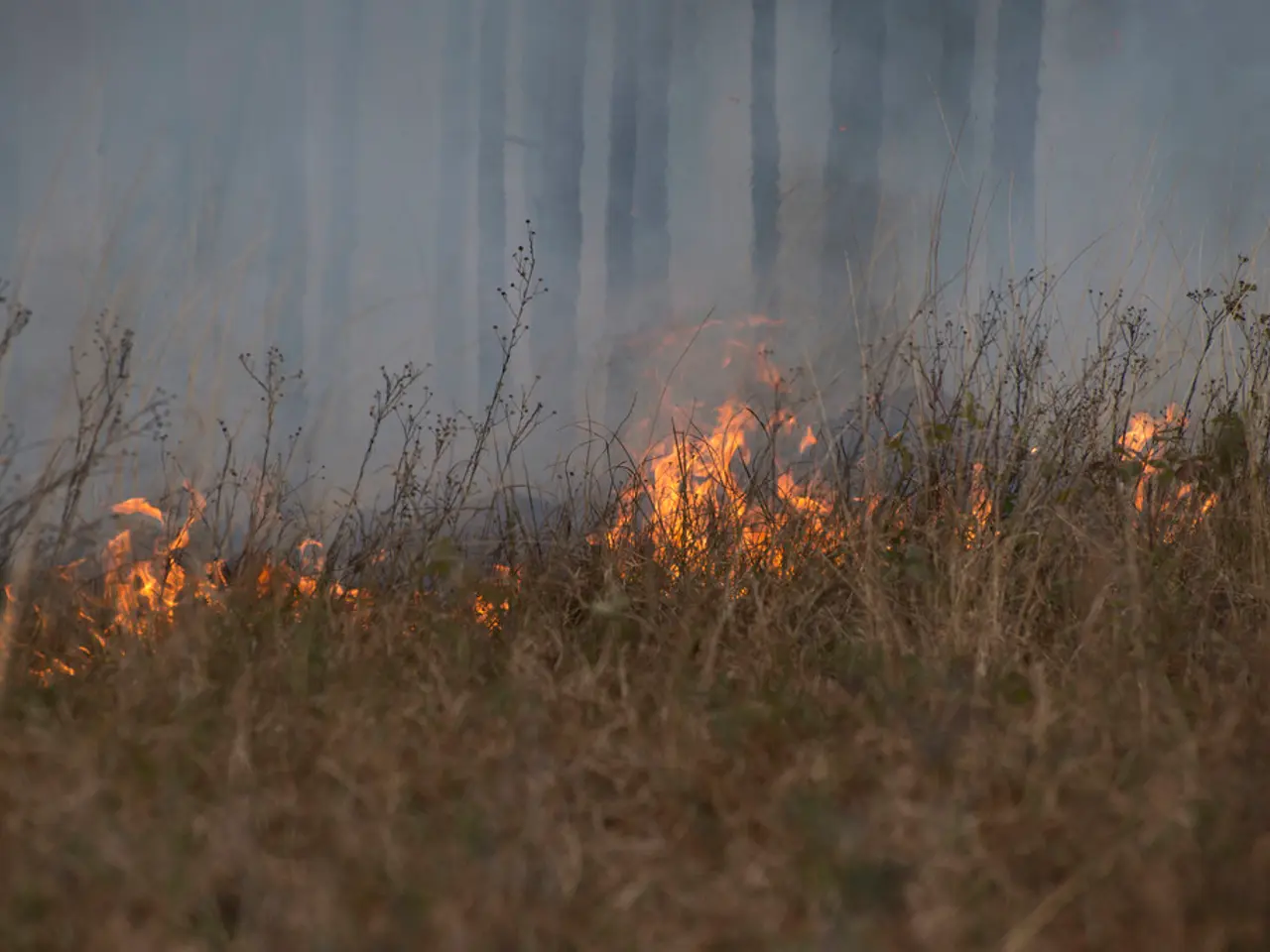Reinforce Your Permaculture Plans with These Crucial Techniques
Fire-Resistant Permaculture Designs: Building Resilient Communities
As climate change increases the likelihood of wildfires, communities are turning to permaculture as a solution for creating lush, low-maintenance landscapes that are also fire-resistant. By adapting permaculture plans and learning from successful fireproof designs, we can create more resilient communities that are better equipped to fight wildfires.
Strategies for Fire-Resistant Permaculture Design
To create a fire-resistant permaculture design, it's essential to consider the interplay between natural systems, community engagement, and technological solutions. Start by mapping your property's sun patterns, water flow, and existing vegetation to understand microclimates and natural fire barriers. Create zones that separate high-fire-risk plants from buildings and water sources, using spacing to reduce fuel continuity. Plan strategic windbreaks and clear firebreak zones with low-flammability materials or plant species. Use natural features and structures, such as rocks, water bodies, and raised beds, to moderate temperatures and moisture, creating less fire-prone areas.
Fire-Resistant Plant Choices
Choosing the right plants is crucial for a fire-resistant permaculture design. Use species like willows and poplars, known for their high moisture content, to shade out more flammable plants. Include plants with succulent leaves, high moisture content, and low resin or oil concentration, such as many deciduous species and herbs like lavender and rosemary when well-maintained. Avoid invasive, high-fuel plants like gorse and blackberries. Use multiple vegetation layers with fire-resistant plants to reduce ladder fuels.
Maintenance Practices for Wildfire Protection
Regular debris removal is key to maintaining fire resistance in a permaculture system. Clear dry leaves, dead branches, and other flammable debris, especially near structures. Prune and thin vegetation to limit fuel continuity and ladder fuels. Maintain moisture by using water features and mulches to keep soil and plants hydrated, reducing fire risk. Monitor and manage combustible materials, avoiding materials and activities that can ignite fires. Keep areas near structures free of flammable materials and use fire-resistant landscaping practices.
Community Involvement and Collaboration
Community involvement can enhance the overall fire resistance of a permaculture system. Communities can work together with local authorities to fight wildfires more effectively. By joining local fire prevention efforts, helping neighbors make their places fire-safe, and working together on firebreaks, water systems, and evacuation plans, communities can create a more resilient and fire-safe environment.
Resources for Further Learning
To deepen your understanding of fireproof permaculture designs, resources are available, such as the Australian Bushfire Building Council, workshops and courses on fire-safe landscaping and permaculture, books like "Fire Country" and "RetroSuburbia", and online resources. Ecosystem Restoration Camps and groups like Treetop Permaculture are leading the way in community-led fireproofing efforts.
By implementing these strategies, communities can create fire-resistant permaculture designs that are not only beautiful but also help control wildfire susceptibility, enhance ecosystem resilience, and build stronger, more resilient communities in fire-prone areas.
[1] Permaculture Research Institute of Australia [2] California Fire Safe Council [3] Fire-Resistant Landscaping for Home and Garden
- Integrate native plants into the design of your swales to improve the moisture retention and reduce the risk of wildfires, as suggested by the science of environmental-science.
- Embrace no-till gardening techniques in your home-and-garden, as it helps in managing rainwater more effectively, contributing to a more resilient community against climate-change.
- Greywater can be used for irrigation in your permaculture design, reducing the reliance on potable water and supporting the principles of sustainable living.
- Collaborate with your community to establish water management systems that can collect and distribute rainwater, further enhancing the fire resistance of your permaculture design.
- Attend workshops and courses on fire-safe landscaping and permaculture to increase your knowledge and skills in creating fire-resistant permaculture designs that cater to your lifestyle and the environment.
- Consult resources such as "The Permaculture Research Institute of Australia" and "California Fire Safe Council" for more information on fire-resistant permaculture designs and sustainable living practices.




